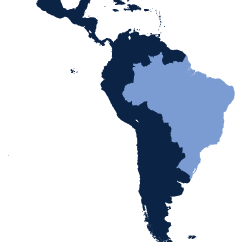Primary Functions
- Gain a shared understanding on key definitional issues.
Detailed Description
As corporate water assessment tools and stewardship initiatives continue to emerge and their underlying approaches and methodologies evolve, there has been a proliferation of sometimes conflicting interpretations and uses of key water-related terms. This is especially true of terms used to indicate geographic locations where water-related challenges are more pronounced, namely “water scarcity”, “water stress”, and “water risk”. In advance of its March 2013 multi-stakeholder working conference in Mumbai, the CEO Water Mandate developed a briefing paper that describes how definitions and interpretations of these terms have evolved over time and how they are currently being used differently by various corporate water tools and initiatives.
In May 2013, the Mandate Secretariat initiated a dialogue among organizations developing corporate water tools and other initiatives to see if a shared understanding could be reached on a number of key definitional issues. While acknowledging that each group uses these terms to varying extents and orients their tools and other products around different objectives, participating organizations agreed that when making use of these terms, doing so in a harmonized and consistent way supports understanding of their products and limits confusion among their audiences. In this spirit, they sought to work toward a mutual understanding on key questions such as:
- Do “scarcity”, “stress”, and risk” refer to three distinct, useful concepts in the context of corporate water stewardship?
- What specifically is meant by each term? How do organizations conceive of them differently?
- How do these terms relate to one another?
- How can these terms be used in practice? For what purposes may these terms not be appropriate or useful?
This initial dialogue has led to a year-long, iterative endeavor through which participating organizations have attempted to reach shared understanding of these terms, while also identifying areas where there is divergence in understanding. These discussions have focused on developing a conceptual overview of these terms and their relationship to one another, as opposed to quantitative approaches to calculating and measuring these terms. The latter goal was deemed quite difficult due to data and methodological limitations (and perhaps even undesirable). During this process, the Mandate Secretariat and partnering organizations sought feedback on this work within the corporate water stewardship community, as well as more broadly amongst others in the scientific, water resources management, and risk assessment communities and others helping to shape the development of water-related indicators and metrics.





